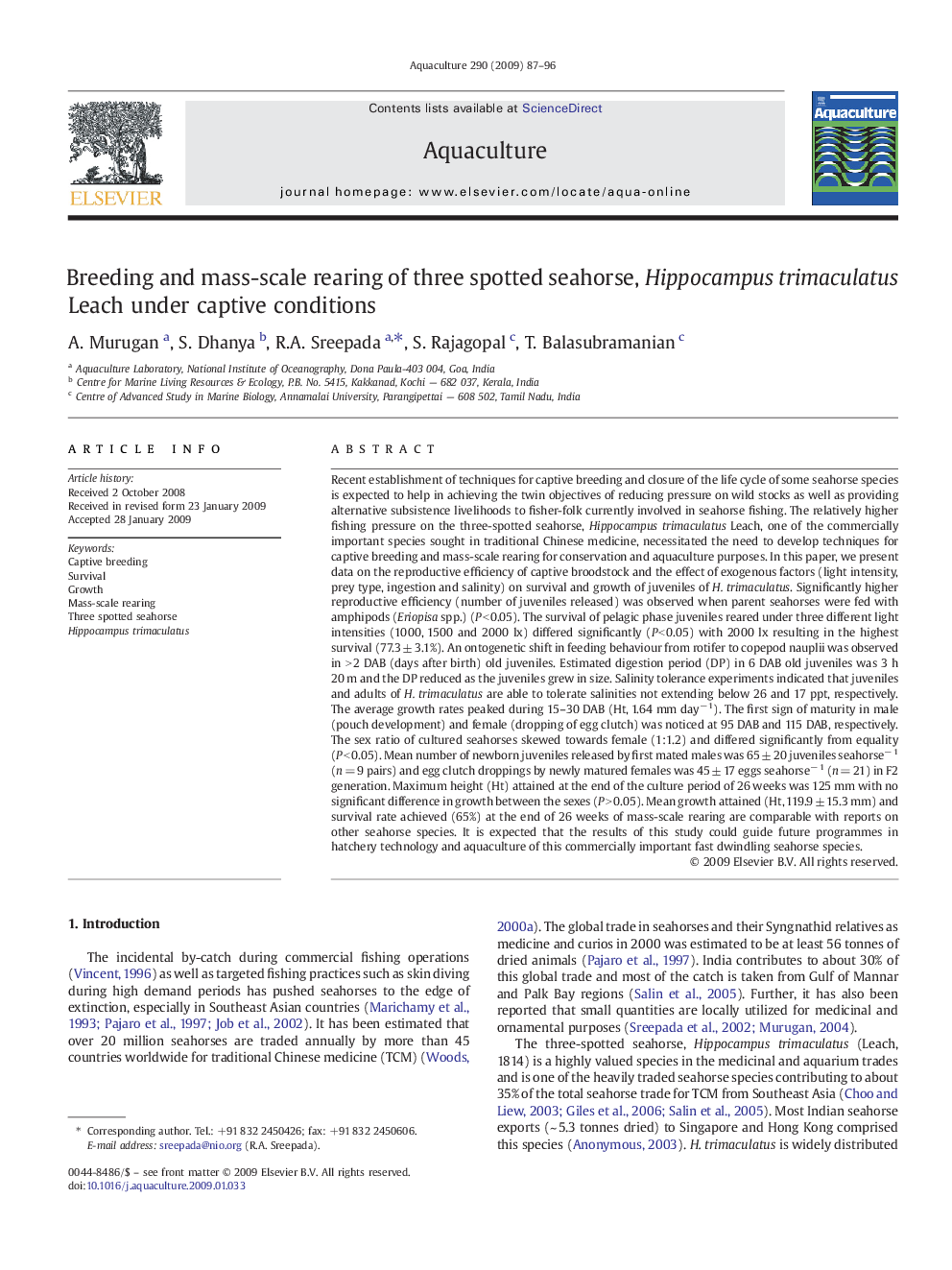| کد مقاله | کد نشریه | سال انتشار | مقاله انگلیسی | نسخه تمام متن |
|---|---|---|---|---|
| 2424263 | 1552947 | 2009 | 10 صفحه PDF | دانلود رایگان |

Recent establishment of techniques for captive breeding and closure of the life cycle of some seahorse species is expected to help in achieving the twin objectives of reducing pressure on wild stocks as well as providing alternative subsistence livelihoods to fisher-folk currently involved in seahorse fishing. The relatively higher fishing pressure on the three-spotted seahorse, Hippocampus trimaculatus Leach, one of the commercially important species sought in traditional Chinese medicine, necessitated the need to develop techniques for captive breeding and mass-scale rearing for conservation and aquaculture purposes. In this paper, we present data on the reproductive efficiency of captive broodstock and the effect of exogenous factors (light intensity, prey type, ingestion and salinity) on survival and growth of juveniles of H. trimaculatus. Significantly higher reproductive efficiency (number of juveniles released) was observed when parent seahorses were fed with amphipods (Eriopisa spp.) (P < 0.05). The survival of pelagic phase juveniles reared under three different light intensities (1000, 1500 and 2000 lx) differed significantly (P < 0.05) with 2000 lx resulting in the highest survival (77.3 ± 3.1%). An ontogenetic shift in feeding behaviour from rotifer to copepod nauplii was observed in > 2 DAB (days after birth) old juveniles. Estimated digestion period (DP) in 6 DAB old juveniles was 3 h 20 m and the DP reduced as the juveniles grew in size. Salinity tolerance experiments indicated that juveniles and adults of H. trimaculatus are able to tolerate salinities not extending below 26 and 17 ppt, respectively. The average growth rates peaked during 15–30 DAB (Ht, 1.64 mm day− 1). The first sign of maturity in male (pouch development) and female (dropping of egg clutch) was noticed at 95 DAB and 115 DAB, respectively. The sex ratio of cultured seahorses skewed towards female (1:1.2) and differed significantly from equality (P < 0.05). Mean number of newborn juveniles released by first mated males was 65 ± 20 juveniles seahorse− 1 (n = 9 pairs) and egg clutch droppings by newly matured females was 45 ± 17 eggs seahorse− 1 (n = 21) in F2 generation. Maximum height (Ht) attained at the end of the culture period of 26 weeks was 125 mm with no significant difference in growth between the sexes (P > 0.05). Mean growth attained (Ht, 119.9 ± 15.3 mm) and survival rate achieved (65%) at the end of 26 weeks of mass-scale rearing are comparable with reports on other seahorse species. It is expected that the results of this study could guide future programmes in hatchery technology and aquaculture of this commercially important fast dwindling seahorse species.
Journal: Aquaculture - Volume 290, Issues 1–2, 4 May 2009, Pages 87–96